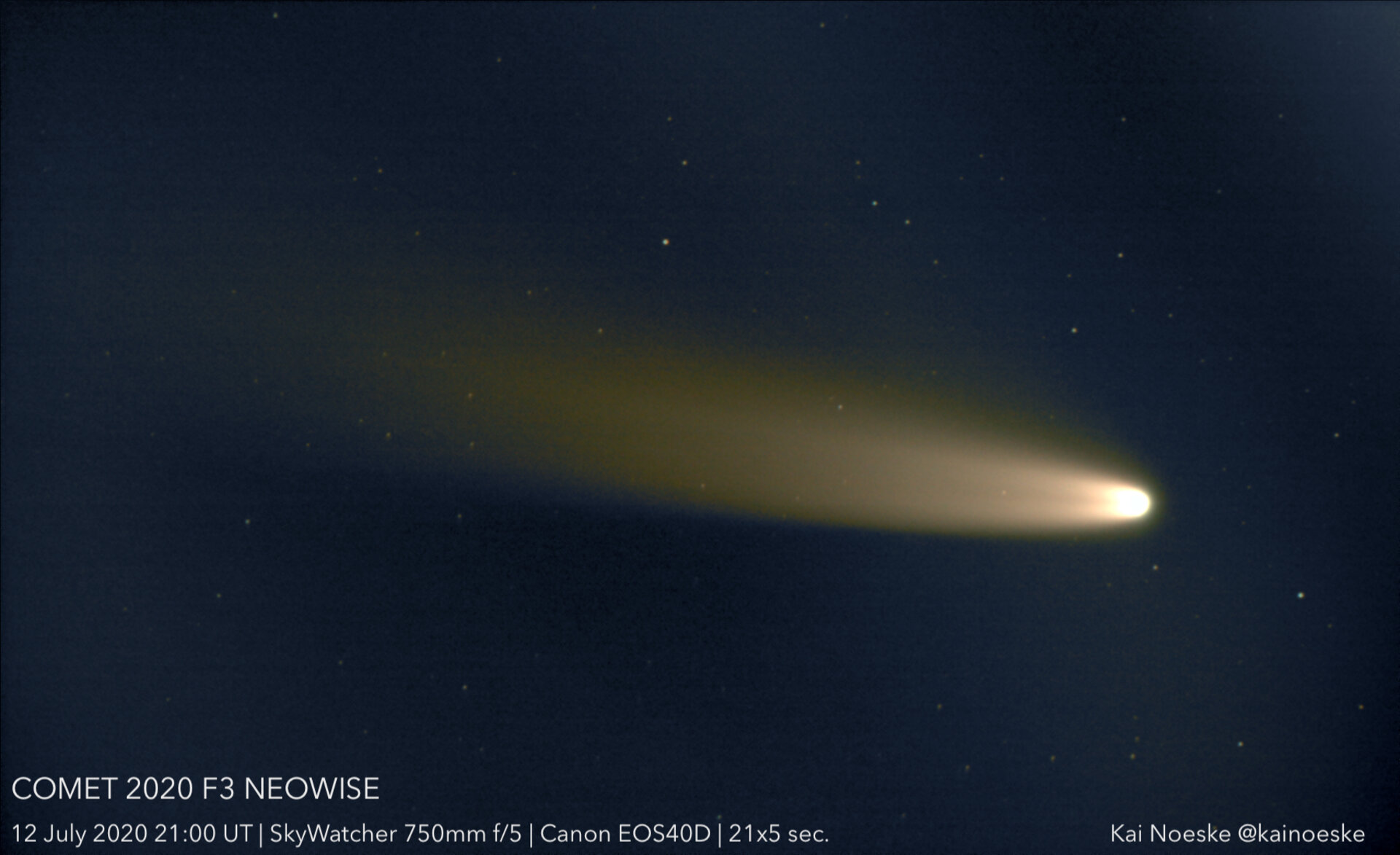How are comets named?
You might have heard of a few comets by name, such as Comet Halley or Comet 67P/Churyumov–Gerasimenko. But by now we have discovered and named thousands of comets. How are their names chosen, and how do astronomers keep track of them all?
Confusingly, a single comet may have multiple names. Aside from fun or shortened nicknames, there are two types of naming systems.
Traditionally, comets are named by (or after) the person or observatory that discovered them. For example, Alan Hale and Thomas Bopp discovered Comet Hale–Bopp on 23 July 1995, before it became famous for being one of the brightest comets ever seen. Similarly, Comet NEOWISE was discovered on 27 March 2020 by NASA’s NEOWISE mission. The latter became famous for being the brightest comet in the northern hemisphere since Comet Hale–Bopp.
However, with new technology greatly speeding up the discovery of comets, single observatories or space missions may discover tens or even hundreds of comets. This means many comets can end up with the same name.
Comet codenames
To make comet names clearer and more consistent, the International Astronomical Union (IAU) has developed a coded naming system. In this system, Comet Hale–Bopp is called C/1995 O1, and Comet NEOWISE C/2020 F3. Let’s break down how these codenames work.
The first letter indicates the category that the comet falls under. The table below shows what categories are possible. Find out more about the different types of comets here.
| P | Periodic comets with an orbital period shorter than 200 years, or those confirmed to have passed by the Sun more than once |
| C | Non-periodic comets, or those with an orbital period longer than 200 years that have been observed to pass by the Sun only once |
| X | Comets with no known or meaningful orbit, usually from historical records |
| D | A periodic comet that has been lost, broken up, or disappeared |
| A | An object previously identified as a comet that is re-classified as a minor planet |
| I | Interstellar objects; this category has only existed since 2017 |
The next part of a comet’s official name is the year in which it was discovered. For example, a periodic comet discovered in 1997 would be designated P/1997.
Finally, the name ends with another letter, followed by a number. Each half of each month gets a different letter: A marks the first half of January, B the second half, C the first half of February, and so forth.
The final number indicates the order in which comets were discovered. If it was the first comet discovered in that half of the month, it gets a 1 (like Comet Hale–Bopp), if it was the second its name will end with a 2, and so on. Comet NEOWISE, whose official name ends with F3, was the third comet to be discovered in the second half of March 2020.
From old names to new
There are some exceptions to the standard format of the official IAU naming system. This might be the case for comets discovered a long time ago, where records are incomplete. For example, a comet described by Aristotle in 341 BC is known as X/−341, because there is not enough information to categorise it better.
Once a periodic comet has been seen flying past the Sun more than once, the first letter ‘P’ in the official name is preceded by a number indicating the order of the second observation. The rest of the name is then replaced by the name of the astronomer(s) or observatory that either discovered it or first calculated the comet’s orbit. Comet Halley is officially known as 1P/Halley, because it was the first comet to be identified (by Edmund Halley) to be periodic. 67P/Churyumov–Gerasimenko, discovered in 1969, was the 67th periodic comet to be numbered.

On the flip side, new discoveries can change the official naming system. When the first known interstellar object, named ‘Oumuamua, was discovered in 2017, it was unclear what its official name should be. It was first classified as comet C/2017 U1, before being reclassified as asteroid A/2017 U1 because it showed no signs of having a coma. When it was proven that ‘Oumuamua came from outside the Solar System, the IAU created the new category I, for interstellar object. The object’s official full name is now 1I/2017 U1 (‘Oumuamua).


